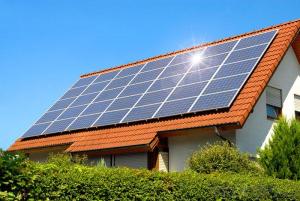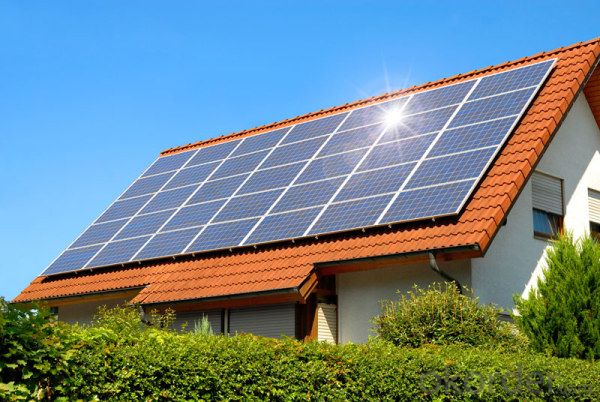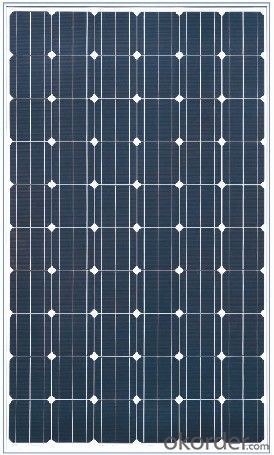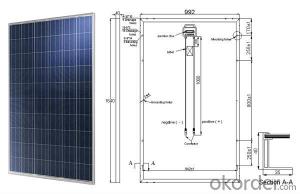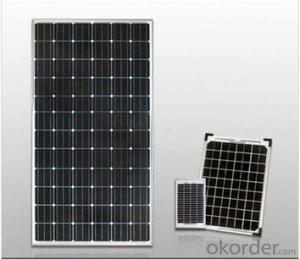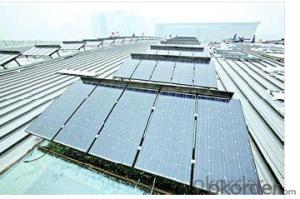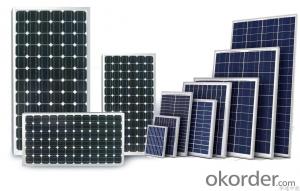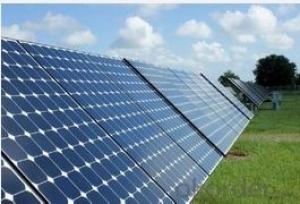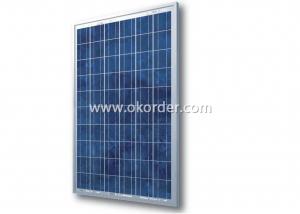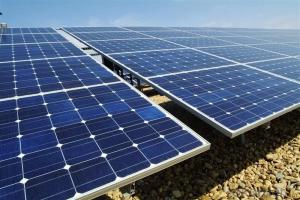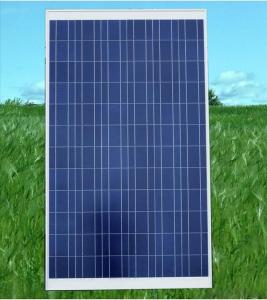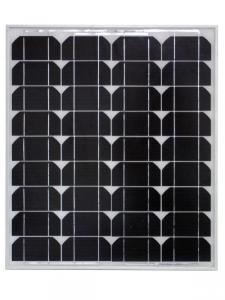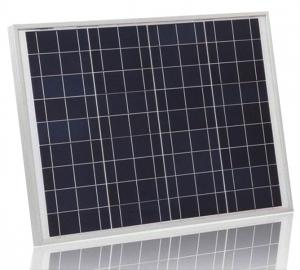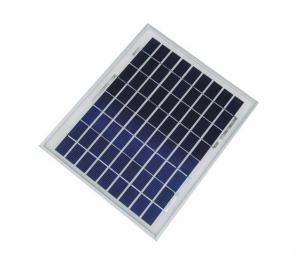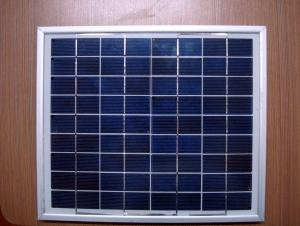Order Solar Panels:260watt CNBM Solar Polycrystalline Series II (250w—260w)
- Loading Port:
- China main port
- Payment Terms:
- TT OR LC
- Min Order Qty:
- 10000 watt
- Supply Capability:
- 500000 watt/month
OKorder Service Pledge
OKorder Financial Service
You Might Also Like
Specification
CNBM Solar Polycrystalline Series II (250W—260W)
Characteristics
Max Power Voltage Vmp(V) | 30.1 | 30.4 | 30.5 |
Max Power Current Imp(A) | 8.31 | 8.39 | 8.53 |
Open Circuit Voltage Voc(V) | 37.4 | 37.5 | 37.6 |
Short Circuit Current Isc(A) | 8.83 | 8.86 | 8.95 |
Max Power Pm(W) | 250 | 255 | 260 |
Temperature Coefficient of Cells
NOCT | 45℃±2℃ | |
Temperature Coefficients of Isc (%/℃) | - 0.049 | |
Temperature Coefficients of Voc (%/℃) | –0.32 | |
Temperature Coefficients of Pmp (%/℃) | –0.43 | |
Mechanical Data
Dimension | 1638 x 982 x 40 mm | |
Weight | 19.5kg | |
No. of Cells and Connections | 60 (6 x 10) | |
Tolerance | 0~+5W | |
Cell Monocrystalline Cell | 156 x 156 mm | |
Packing | 700 Pcs/40ft(H) Container | |
Limits
Operating Temperature | –40 °C to +85°C | |
Storage Temperature | –40 °C to +85°C | |
Max System Voltage | 1000VDC(IEC) / 600VDC(UL) | |
IV Curve

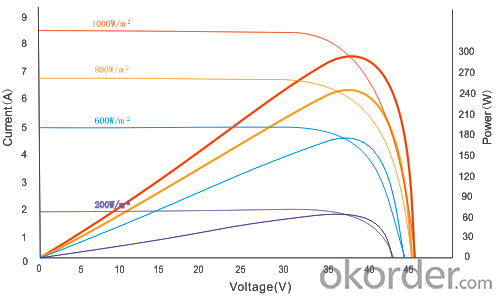
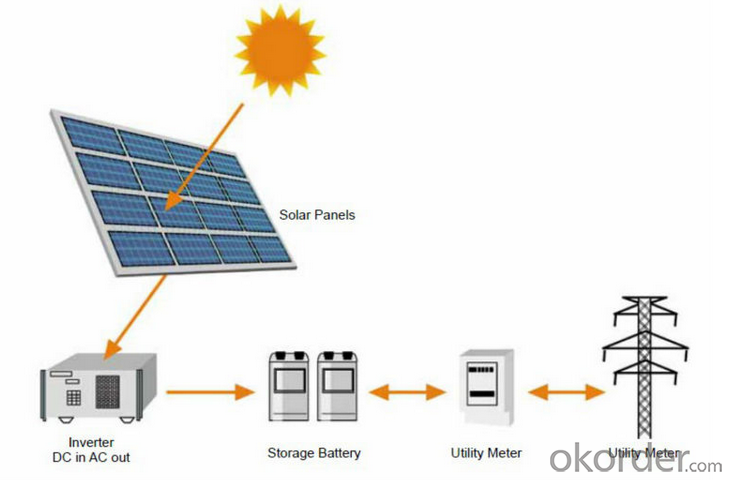
Image

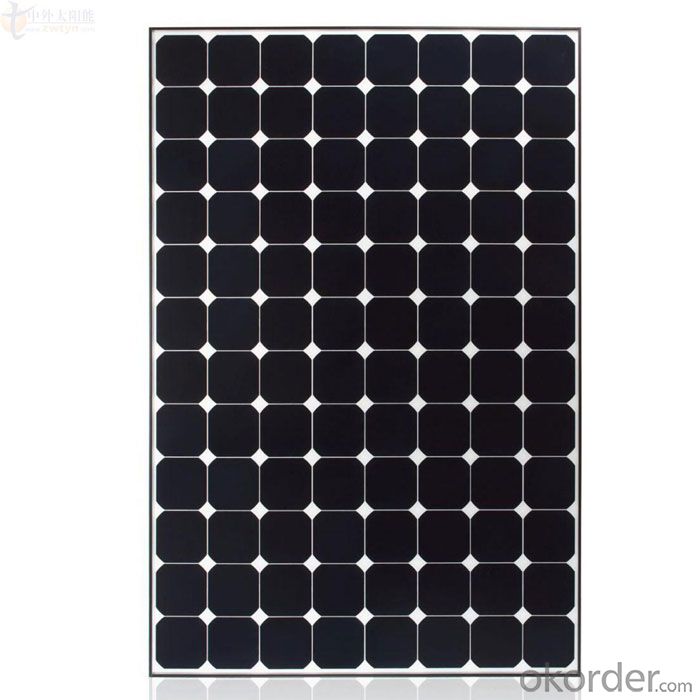
Guarantees
Products Guarantee 12 yrs free from defects in materials and workmanship
Performance Guarantee No less than 90% within 10yrs and no less than 80% within 25yrs
Certificates TUV (IEC61215&IEC61730), VDE(IEC61215&IEC61730), UL, CE
FAQ
1. Q: Do you have your own factory?
A: Yes, we have. Our factory located in Jiangsu province.
2. Q: How can I visit your factory?
A: Before you take off from your country, please let us know. We will show you the way, or arrange time to pick you up if possible.
3. Q: Do you provide free sample?
A: Usually we do not offer free sample
4. Q: Could you print our company LOGO on the nameplate and package?
A: Yes, we can do that.
- Q: Hello, I am shopping for solar panels for my home and there are so many to choose from. My house uses 40 Kw of power a day. If you had to choose from the output power of a solar panel from below, which one would you choose and why would you choose it? 2 Volts 4 Amps 48Watts2 Volts 8.5 Amps 02Watts6 Volts 7 Amps 2Watts24 Volts 4.2 Amps 00.8Watts24 Volts 8 Amps 95Watts
- There is more to sizing a system than simply selecting panels. I would suggest that you contact a solar installer to do a bid on your system. The quote should be free, and you can always say no. If a house used 40 kWh per day in our area, that would suggest a 6 kW array to offset substantially all the energy usage over the course of a year. Serious panels tend to be in the neighborhood of 200 watts nowadays, and that would mean 30 of those. You could size the system smaller, of course, if you wanted to offset a smaller percentage of your electricity. If there is any way that you can reduce the energy requirments, that will save you more money than putting in big solar. For example, if you can cut that in half by adding insulation and more efficient appliances, you will save more money than if you got a big array to power everything as-is.
- Q: The first panel is located in New England, the second is placed in the Sahara desert, the third is on the Earth side of the moon, and the last is on the far side of the moon. Which panel would absorb the most sunlight over a year's time and why ? All the panels are place in optimal places where they would get the most light available.
- Well, as always, context is important. Sunlight is composed of a lot of different types and wavelengths of energy, and our atmosphere and magnetoshpere filter out a certain amount. If the question is actually which solar panel would produce the most energy (which I assume it is), we would have to look at how solar panels work. There are three different classes of solar panel function. Photovoltaic cells convert sunlight directly into electrical energy, but most systems are pretty low on efficiency. Solar cells can be used for generating heat, through boiling water or some other liquid frequently. And solar panels can be used to produce chemical reactions, breaking down solutions into ions, for example, and the breaking of the molecular bonds releases a certain amount of energy. So theoretically, the two sides of the moon get the same amount of solar energy, just at different times -- about 6 months of the year or so. If the solar panels were thermal energy panels, the ones on the Earth would do much better, because the moon is so much colder. The weather is the most convincing argument for comparing the Sahara and New England. New England is likely to be more cloudy and polluted than the Sahara. Since the Earth probably eclipses the moon a bit more often than the reverse, there may be a little more visible sunlight that gets to earthly solar panels, but the ones on the moon would get a greater proportion of the sunlight (more wavelengths, for example), so it would be close. The Earth eclipses only the near face of the moon, so that would give the far side of the moon a slight edge perhaps. I'd guess it would be the far-side lunar one, but too many variables to be sure.
- Q: I want to make 2V 4.5A solar panel to charge my battery used in my RC car project. I just like to know how should I amplify the current for 4.5A. I need the total circuit diagram. Can anyone help me. Please. I need some affordable methods please.
- To increase current, you connect the cells in parallel. But I think you really mean you need 4.5 watts rather than 4.5 amps of current. For an RC car, 4.5 amps would be huge, literally a regular car battery. So I think you mean you need a 2v, 4.5w panel. That would make more sense for an RC car battery. I went on OKorder and bought a 2v, 5 watt panel for about $30.
- Q: Can solar panels be used on boats or marine applications?
- Yes, solar panels can be used on boats or marine applications. In fact, they are becoming increasingly popular for providing renewable energy on board boats, yachts, and other marine vessels. Solar panels can generate electricity to power various onboard systems, including navigation equipment, lighting, refrigeration, and charging batteries. They are a sustainable and efficient way to harness solar energy while minimizing reliance on traditional fuel sources.
- Q: Can solar panels be installed in a community or neighborhood?
- Yes, solar panels can be installed in a community or neighborhood. In fact, many communities and neighborhoods have embraced solar energy and installed solar panels on residential and commercial buildings. Installing solar panels in a community or neighborhood can contribute to a cleaner environment, reduce energy costs, and promote sustainable living. Additionally, community solar initiatives allow multiple households to collectively benefit from shared solar installations, making it accessible to a wider range of residents.
- Q: How do solar panels affect the environment?
- Solar panels have a positive impact on the environment as they produce clean and renewable energy, reducing the need for fossil fuels. They help decrease greenhouse gas emissions, air pollution, and water usage associated with traditional energy sources. However, the production and disposal of solar panels can have some environmental impact, including the use of certain materials and energy during manufacturing. Overall, their benefits outweigh the potential drawbacks.
- Q: How long does it take a 5 watt, 2 volt solar panel to charge a 2 volt R.V. battery?
- Homemade okorder
- Q: Could you have a solar panel in space that would transmit electricity remotely? Maybe have some kind of receiving antenna to pick up the energy? Perhaps there could be a string of them orbiting the Earth?Why wouldn't that work?
- Hi There Solar panels work better in space than in the atmosphere and wireless transmission of power is now becoming possible but rarely practical. Currently more practical would be orbiting geo stationary large scale mirrors focusing light on panels on earth. In another 50 years who knows? Energy being transmitted wirelessly generates heat and radiation. I suspect that if a powerful enough solar array to meet earthly needs was put in orbit then transmitting that sort of power through the atmosphere would cause issues all of its own. Regards vk4ari
- Q: Can solar panels be installed on tall buildings?
- Yes, solar panels can be installed on tall buildings. In fact, tall buildings are often ideal for solar panel installations as they typically have more available roof space to accommodate a larger number of panels. Additionally, being elevated, tall buildings are less likely to be obstructed by shading from surrounding structures or trees, maximizing their exposure to sunlight and optimizing energy generation.
- Q: Do solar panels require a battery for storage?
- No, solar panels do not necessarily require a battery for storage. While batteries can be used to store excess energy produced by solar panels for later use, it is not a mandatory component. Solar panels can also be directly connected to the electrical grid, allowing the excess energy to be fed back into the grid and credited to the owner.
Send your message to us
Order Solar Panels:260watt CNBM Solar Polycrystalline Series II (250w—260w)
- Loading Port:
- China main port
- Payment Terms:
- TT OR LC
- Min Order Qty:
- 10000 watt
- Supply Capability:
- 500000 watt/month
OKorder Service Pledge
OKorder Financial Service
Similar products
Hot products
Hot Searches
Related keywords
